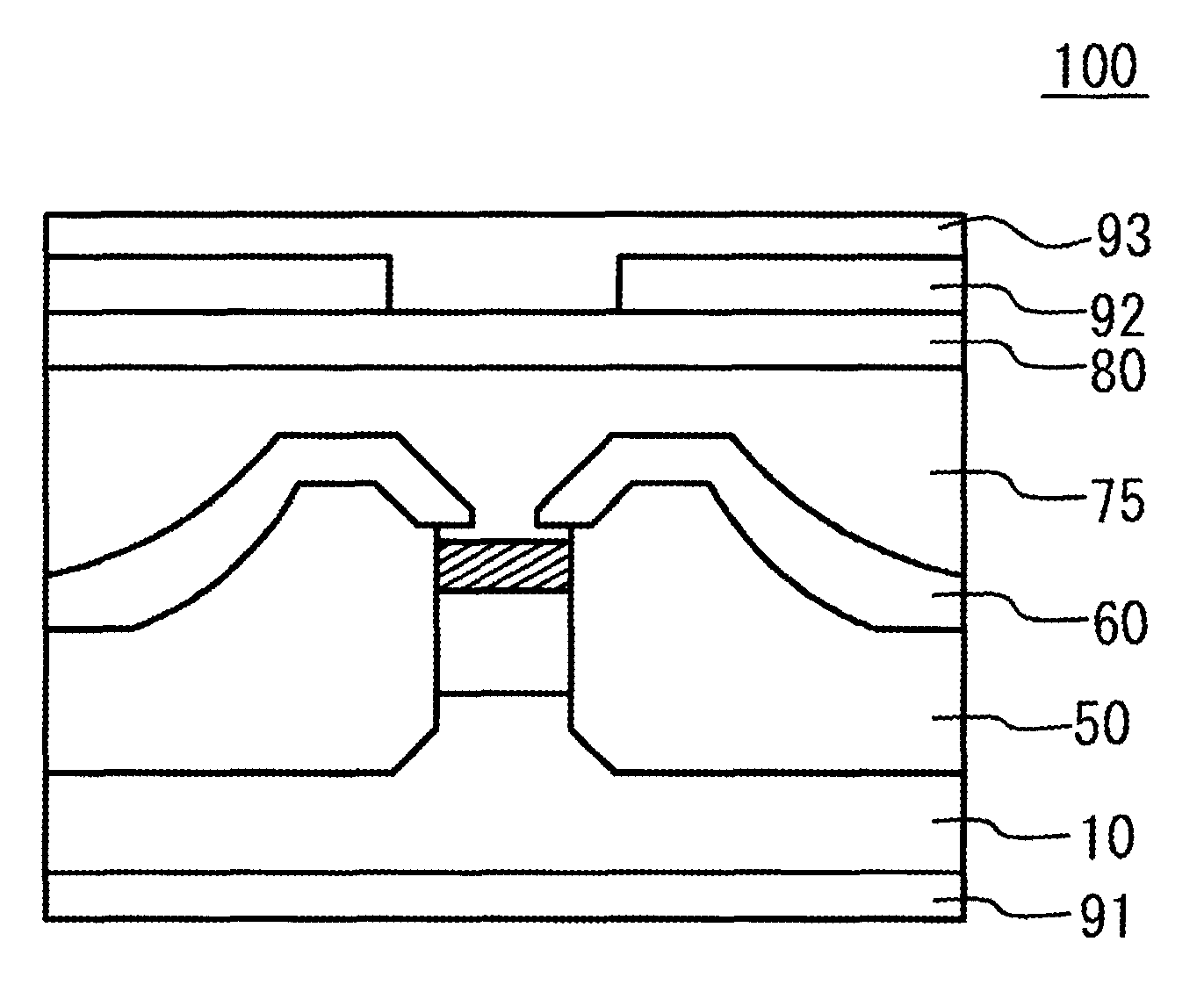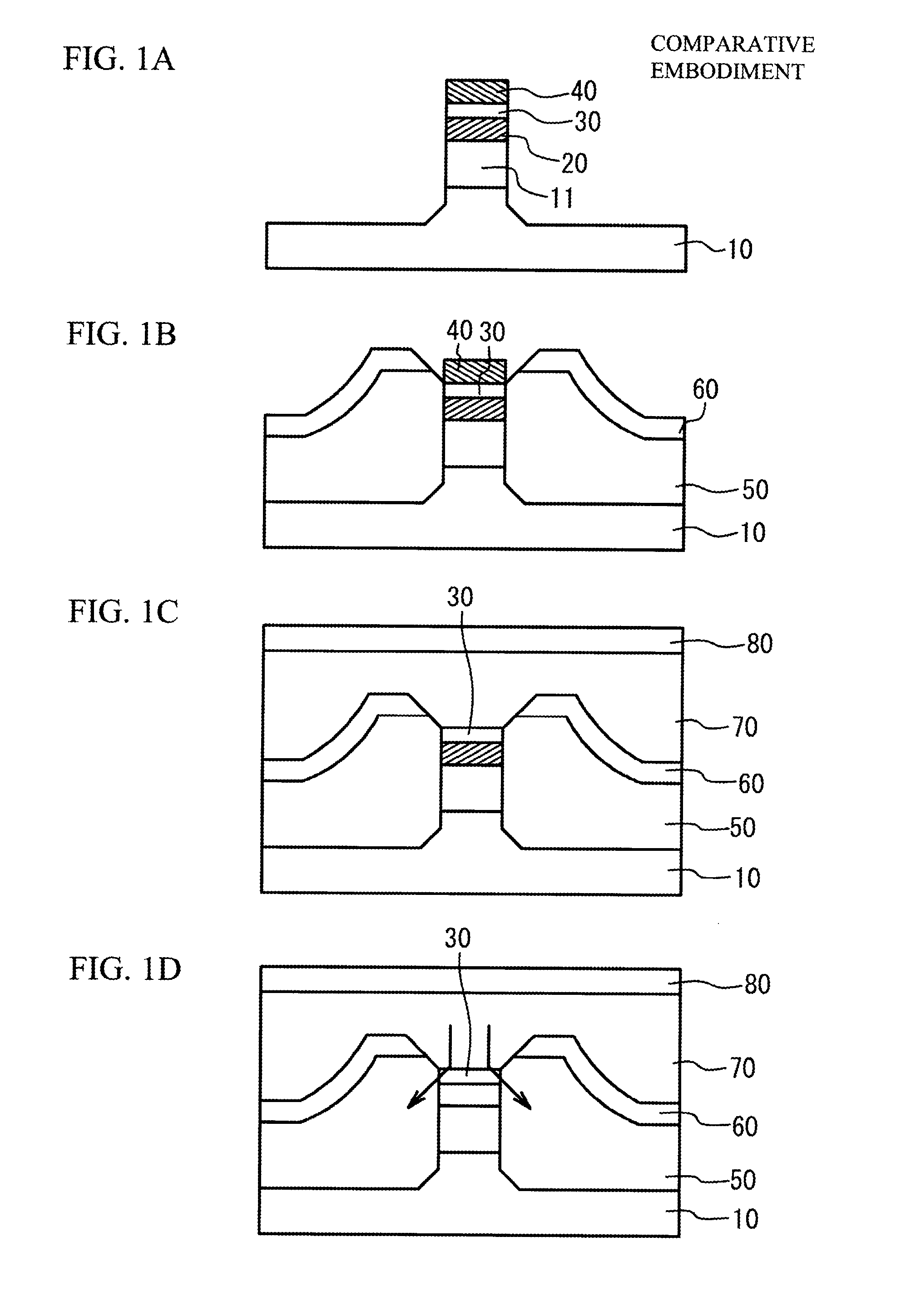Optical semiconductor device and method of manufacturing optical semiconductor device
a technology of optical semiconductor and semiconductor laser, which is applied in the direction of semiconductor laser, laser details, electrical equipment, etc., can solve the problems of reducing the thickness of the p-type cladding layer, the variation of the width, and the inability to make the distance between the n-type inp burying layer and the p-type cladding layer constant in the wafer face, so as to reduce the threshold current of the semiconductor laser and reduce the thickness of the p-typ
- Summary
- Abstract
- Description
- Claims
- Application Information
AI Technical Summary
Benefits of technology
Problems solved by technology
Method used
Image
Examples
first embodiment
[0027]A description will be given of a method of manufacturing a semiconductor laser in accordance with a first embodiment. FIG. 2A through FIG. 4 illustrate the method of manufacturing the semiconductor laser in accordance with the first embodiment. As illustrated in FIG. 2A, the n-type cladding layer 11, the active layer 20 and the p-type cladding layer 30 are grown on the n-type InP substrate 10. Next, the mask 40 is formed in a stripe shape on an area of the p-type cladding layer 30 where the mesa stripe is to be formed.
[0028]The n-type InP substrate 10 is, for example, made of n-type InP in which Sn (tin) of 1.0×1018 / cm3 is doped. The n-type cladding layer 11 is, for example, made of n-type InP having a thickness of 0.5 μm in which Si (silicon) of 1.0×1018 / cm3 is doped. For example, the active layer 20 has an InGaAsP-based multiple quantum well structure. The p-type cladding layer 30 is, for example, made of p-type InP having a thickness of 0.2 μm in which Zn (zinc) of 1.0×1018...
second embodiment
[0041]The first burying layer 50 may have a structure in which a highly resistive semiconductor layer and a p-type semiconductor layer are laminated. FIG. 7A illustrates a schematic cross sectional view of a semiconductor laser 100a in accordance with a second embodiment. The semiconductor laser 100a is different from the semiconductor laser 100 of FIG. 4 in a point that a burying layer in which a highly resistive semiconductor layer 52 is laminated on a p-type semiconductor layer 51 is provided instead of the first burying layer 50. Impurity such as Fe, Ti or Co generating deep acceptor level is doped in the highly resistive semiconductor layer 52. With the structure, an element capacity may be reduced more, compared to a case where a p-type InP is used as the first burying layer 50. Thus, the frequency characteristics of the semiconductor laser 100a are improved.
[0042]FIG. 7B illustrates a method of manufacturing the semiconductor laser 100a. As illustrated in FIG. 7B, instead of ...
third embodiment
[0044]FIG. 8 illustrates a schematic cross sectional view of a semiconductor layer 100b in accordance with a third embodiment. The same components as those illustrated in FIG. 8 have the same reference numerals as FIG. 4. In the embodiment, “W” and “h” of a region between the active layer 20 and the second burying layer 60 are researched. The “h” is a height from the active layer 20 to a lower face of the second burying layer 60 formed in the process of FIG. 3A. The “W” is a width of the depressed face of the second burying layer 60 above the active layer 20.
[0045]Samples 1 to 3 of Table 1 were manufactured having a different combination of “W” and “h”.
[0046]
TABLE 1HEIGHT hWIDTH W(nm)(nm)W / hSAMPLE 11202001.7SAMPLE 21002002.0SAMPEL 3801602.0
[0047]FIG. 9 illustrates the current characteristics of the samples 1 to 3 of the semiconductor laser 100b. In FIG. 9, a horizontal axis indicates a current provided to the semiconductor lasers, and a vertical axis indicates outputting power of th...
PUM
 Login to View More
Login to View More Abstract
Description
Claims
Application Information
 Login to View More
Login to View More - R&D
- Intellectual Property
- Life Sciences
- Materials
- Tech Scout
- Unparalleled Data Quality
- Higher Quality Content
- 60% Fewer Hallucinations
Browse by: Latest US Patents, China's latest patents, Technical Efficacy Thesaurus, Application Domain, Technology Topic, Popular Technical Reports.
© 2025 PatSnap. All rights reserved.Legal|Privacy policy|Modern Slavery Act Transparency Statement|Sitemap|About US| Contact US: help@patsnap.com



